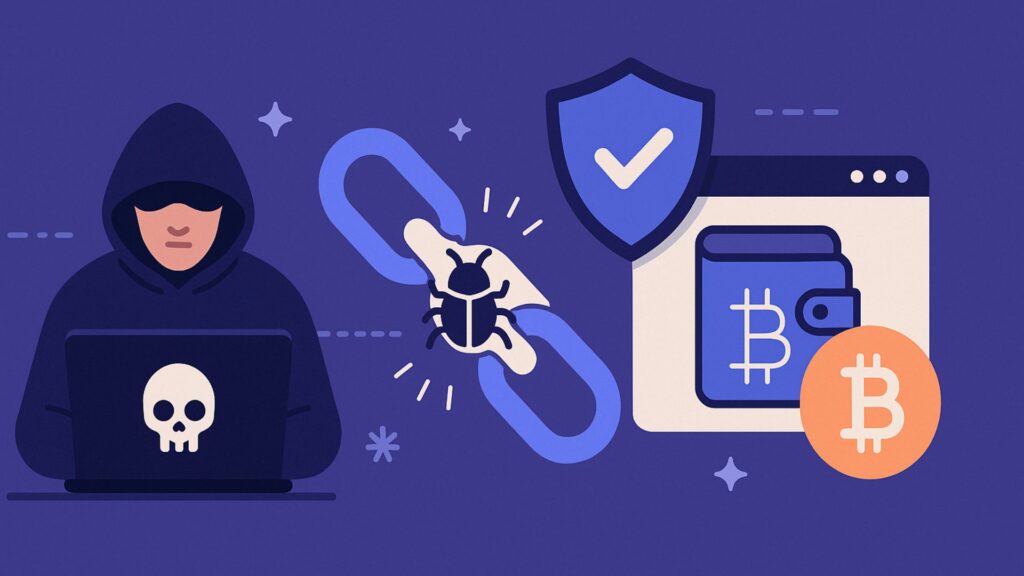The past week has seen the discovery of one of the most significant supply chain attacks in open-source history.
A trusted npm account was compromised and used to push malicious code into widely used JavaScript packages.
This event is drawing attention well beyond the developer community because the malicious updates were specifically written to interfere with cryptocurrency transactions.
With billions of downloads, these packages form the foundation of web applications, including those connected to blockchain and finance.
What Happened in the npm Attack?
The incident came to light when developers began noticing unusual build errors. On further inspection, heavily obfuscated code was uncovered, and among the fragments were functions clearly intended to monitor and manipulate cryptocurrency activity.
The code was designed to act as a clipper, silently replacing wallet addresses either during network requests or while a transaction was being signed.
The attack relied on a clever detail. Instead of simply substituting a random attacker address, the malware used the Levenshtein algorithm to find a wallet address visually similar to the intended one.
This meant a user glancing at the first and last few characters could easily mistake the attacker’s address for their own. It was a patient and calculated method aimed at exploiting human habit rather than brute force.
The attack was traced back to the npm account of a well-known developer. Once compromised, malicious versions of popular packages were released and quickly downloaded, as developers worldwide rely on npm for project dependencies.
Packages such as chalk, debug, strip-ansi, ansi-styles, and colour-convert were affected. Together, they account for well over a billion downloads, making this not only a threat to cryptocurrency users but also a systemic risk to the broader software ecosystem.
Researchers identified addresses belonging to the attackers across multiple blockchains, including Ethereum, Bitcoin, Solana, Tron, Litecoin, and Bitcoin Cash.
At the time of disclosure, these wallets had not yet moved funds. That fact does not reduce the seriousness of the threat, since the infrastructure to capture and reroute assets had already been prepared.
Ledger’s Chief Technology Officer, Charles Guillemet, was one of the first to warn the public. He urged crypto users to refrain from making transactions with software wallets until more clarity emerged.
His warning emphasised that while blockchain protocols such as Ethereum or ZKsync remain safe at their core, the danger lies in compromised front-end software where users interact with the chain.
How Should Investors, Users, and Developers Respond Now?
The discovery of this incident calls for different responses from different groups. While the attack does not undermine the integrity of the blockchains themselves, it does highlight weak links in the surrounding ecosystem.
For investors, the advice is simple but vital. Use a hardware wallet whenever possible. Unlike software wallets that depend on potentially compromised environments, hardware wallets display the full address on a dedicated screen.
This forces users to verify the actual destination before signing. Investors should take the time to read the entire address and not just the first and last few characters. Pausing to verify can mean the difference between keeping and losing funds.
For users who interact daily with decentralised applications, the best course of action is caution. If you rely on a browser or mobile wallet, it is sensible to wait before conducting important transfers until developers confirm their applications are free from compromised dependencies.
Do not blindly sign transactions. This is particularly important in decentralised finance, where one hurried confirmation can expose an entire balance.
For developers, the responsibilities are heavier. First, audit your dependency tree and identify whether your project installed one of the malicious versions.
Do not rely on version ranges that may pull in compromised updates. Pin exact versions in package.json, and use overrides where needed.
Delete lockfiles and node_modules folders, then reinstall from clean, safe versions. Rotate any tokens and credentials that may have been exposed during builds.
In the future, favour npm ci rather than npm install in continuous integration environments to ensure predictable, locked dependencies.
These steps are not exciting, but they are essential. Supply chain attacks work because open-source is built on trust.
Developers must now add verification and discipline to that trust. By doing so, they help protect not only their own projects but also their users and the wider blockchain ecosystem.
Conclusion
This attack is a reminder that the strength of a blockchain protocol alone does not secure the end-to-end experience.
The npm compromise did not break cryptography or consensus, but it targeted the very place where human trust meets digital transactions. For investors, the lesson is to depend on hardware wallets and careful checks.
For users, it is to remain patient and vigilant. For developers, it is to lock dependencies, audit, and rebuild from clean versions. The wider community must accept that supply chain risks will continue, but with stronger practices and collective awareness, the damage can be contained.

